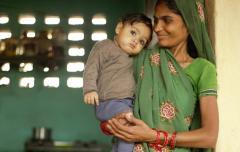Energy Safety Nets: India Case Study
The aim of this Energy Safety Nets: India Case Study is to identify measures that have been implemented to enable poor people to access modern energy services, analyze their impact, and explore the reasons for their success or lack thereof.
While India’s experience with subsidizing access to electricity is not new, this study focuses on the subsidization of clean cooking energy in India, in particular on the policies and schemes introduced since 2014 to improve access to and targeting of liquid petroleum gas (LPG) subsidies.
Following the Multi-Tier Framework to measure energy access introduced by the Global Tracking Framework report, and work that has adapted it for use in India, the case study looks beyond connections and assesses the progress of the LPG program in India in its entirety.
This country case study – like the other five, covering Brazil, Ghana, Indonesia, Kenya and Mexico – seeks to answer four research questions:
- What policy measures have been used in India to enable very poor and marginalized people to access and use LPG as a cooking fuel?
- How effective have these measures been in enabling the poorest social groups to access and use LPG?
- What links have there been/are there between these measures and wider/other social assistance programs?
- What changes could be made to enhance the effectiveness of existing policy measures in enabling very poor people to access modern cooking energy services?
See also: Energy Safety Nets series




